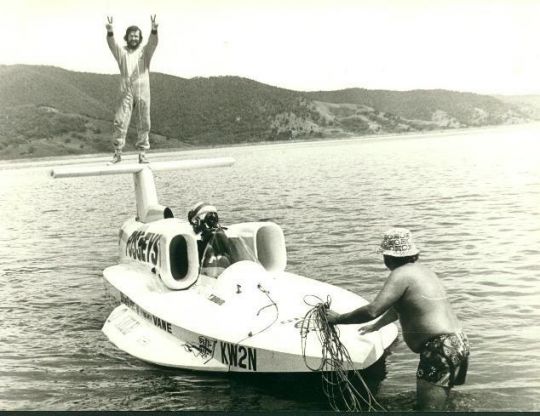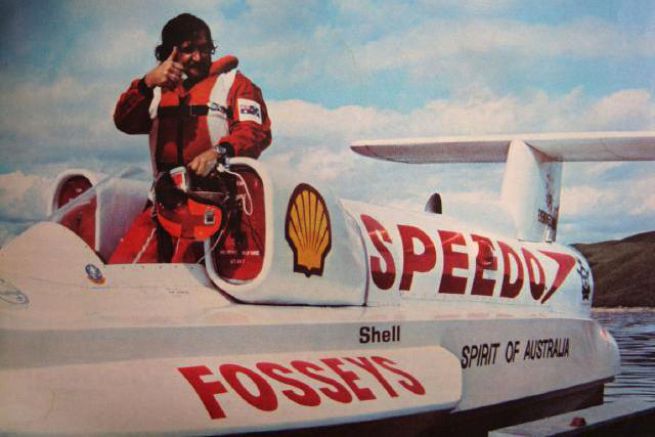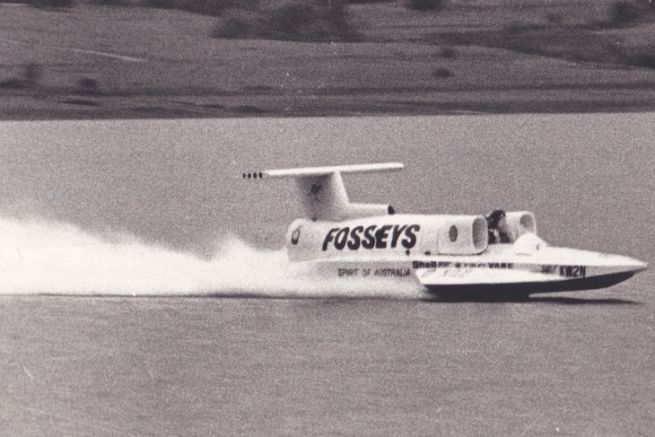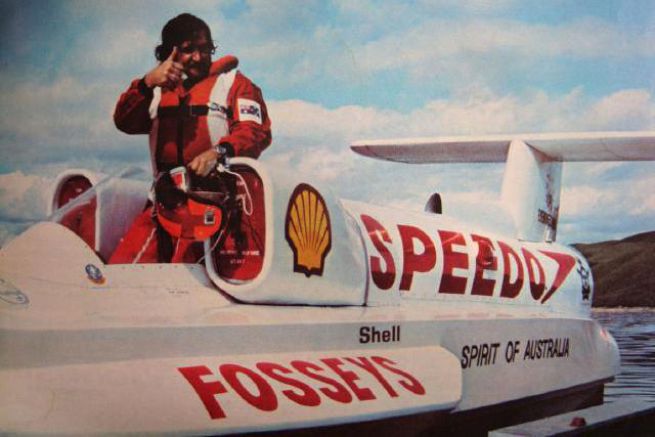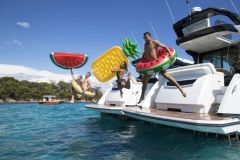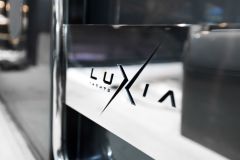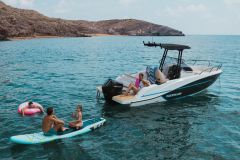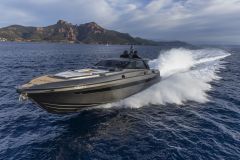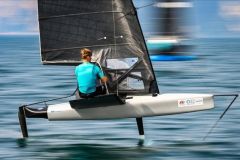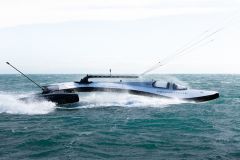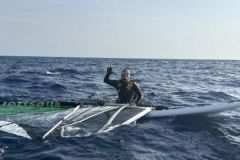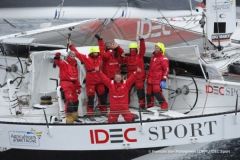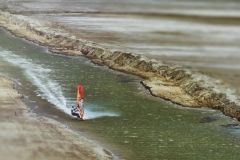An amateur construction
It was on the family kitchen table in 1970 that Ken Warby drew the plans for his hydroplane Spirit of Australia. Construction began two years later in the backyard of the family home, without any protection from the elements, forcing the pilot to work on his boat in broad daylight and in good weather.
Amateur construction means a limited budget. Thus, the materials chosen are plywood and wood and the tools are more than limited: drill, circular saw and sander.
Ken Warby learned of a Royal Australian Air Force (RAAF) auction in Sydney. He went there with a bold idea: to use aircraft engines as propulsion. He buys three Westinghouse J34 turbojet engines, two for $100 each and one for $60.
While it is far from being finished due to a lack of budget - no engine hood, no air intakes or even a stabilizer - Spirit of Australia left its home site in 1974. He then embarked on a speed test phase with the objective of breaking the Australian speed record.
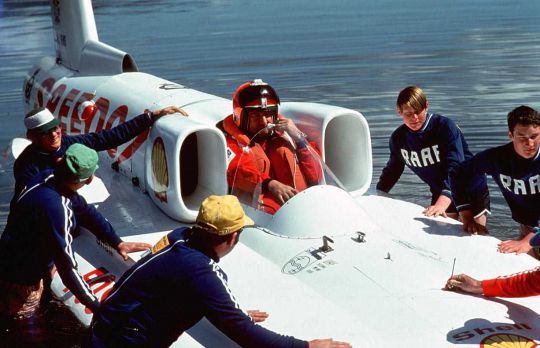
Ken and the RAAF Apprenticeship Team in 1978
A fundraising event
As he gains speed, Ken Warby needs a larger body of water. After a long search, he chose the Blowering Dam, located on the Tumut River in Australia in the New South Wales region about 400 km south-southwest of Sydney. Through training, he reached the 191 barrier n?uds?!
To devote himself totally to his objective, Ken decided to leave his sales position for Makita, a Japanese capital goods manufacturing company.
And to raise the funds necessary for the success of his record project, he carried out various operations. He exhibited his hydroplane at Shell service stations (which would be one of the first sponsors) throughout Australia, and began painting in oil at the same time.
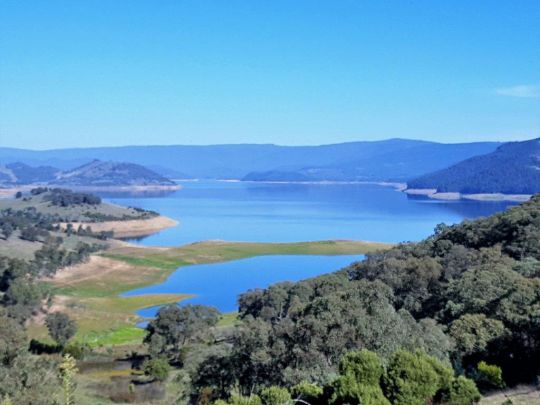
The Blowering Dam
Wind tunnel tests
To determine how he could beat the current speed record - 458.98 km/h (248 knots) by Lee Taylor in 1977 - Warby decided to do wind tunnel tests. These tests are conducted at the University of New South Wales by Professor Tom Fink. The latter had already worked on the Bluebird K7 of Donald Campbell, Ken Warby's idol and a great British pilot with eight world speed records on water and land.
Impressed by the design of Spirit of Australia and the approach taken for this record attempt, Tom Fink embarked on the adventure alongside the team.
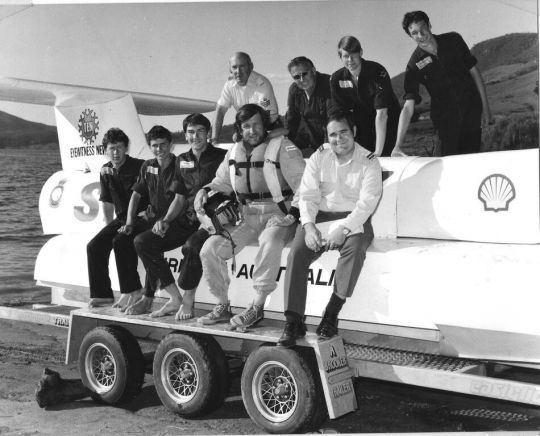
Ken and the RAAF team in 1978
A first sponsor
Throughout the 1970s, the pilot continued to display his boat and sell his oil paintings in shopping malls to raise the necessary funds. He thus obtained sponsorship with the local retail store Fossey's, which enabled him to complete the work: engine hood, mechanical steering or air inlets.
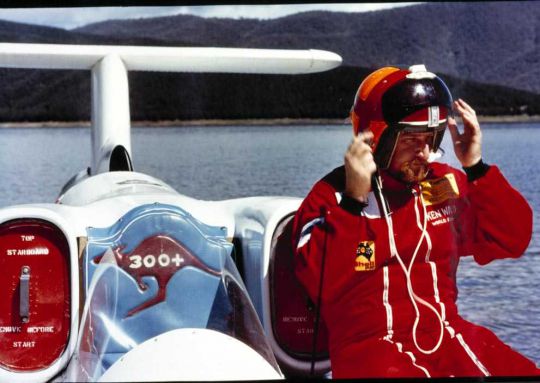
Ken ready to break the record in 1978
A first world record
Following a new speed test phase, carried out in Blowering Dam in mid-1977, Spirit of Australia now has between 235 and 243 n?uds?! Ken didn't know it at the time, but his engine's injectors were blocked, preventing him from reaching his maximum speed.
Following structural calculations, Ken and Tom decided to remove 4 cm from the rudder, which allowed the pilot to break his first world speed record in November 1977: 250 n?uds?!
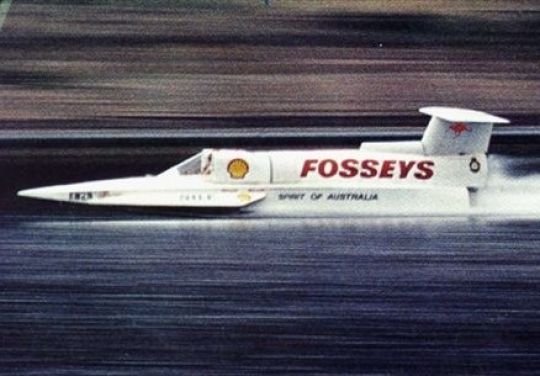
Record 511 km/h in 1978
Crossing the 300 km/h mark
But this record is not enough for him pas?! Ken Warby wants to be the first man to reach 300 km/h. If the RAAF assists the pilot when it has free time, this new attempt will make a difference. The Royal Australian Air Force is now offering its permanent assistance.
On the basis of training of RAAF apprentices in Wagga Wagga, the largest city in Riverina, a region south of New South Wales in Australia, one of Ken's J-34s is revised. The military are really surprised that it worked and that with it, Ken was able to break a world record.
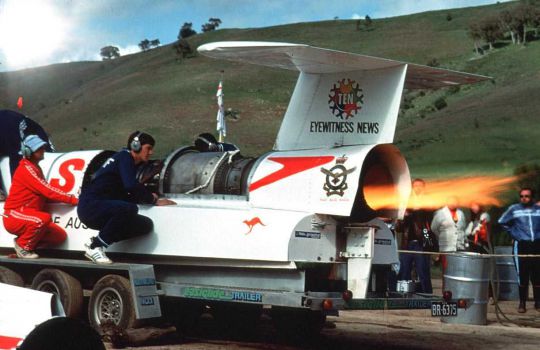
Engine test by the RAAF team in 1978
With a new sponsor - Speedo - and a dirty engine, Ken returned to the dam in 1978 and became the first man to cross the 261-knot barrier and then the 269-knot barrier, with a peak at 275 n?uds?! A superb victory for a boat built on a very limited budget in a backyard.
Spirit of Australia is now on display at the National Maritime Museum in Darling Harbour, Sydney, Australia.
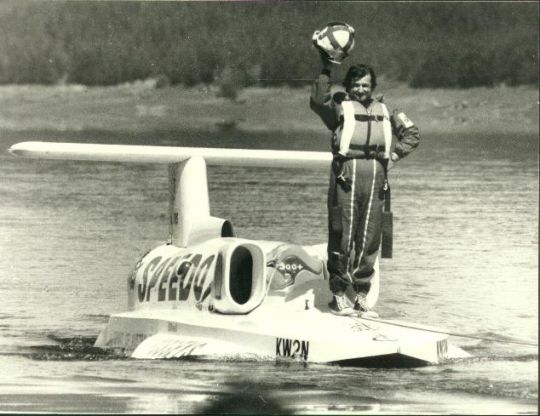
Ken after his second record in 1978
The other records
While he has become the fastest man in the world, Ken Warby is also the first and only one to have designed, built and piloted a boat for a speed record attempt.
